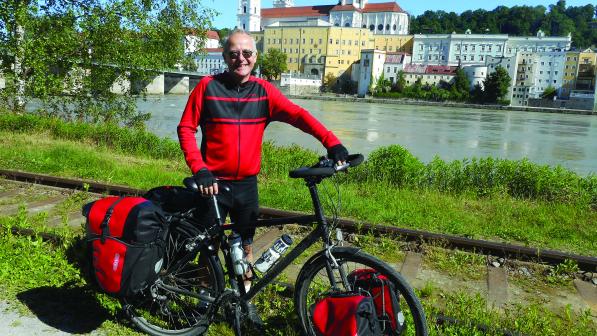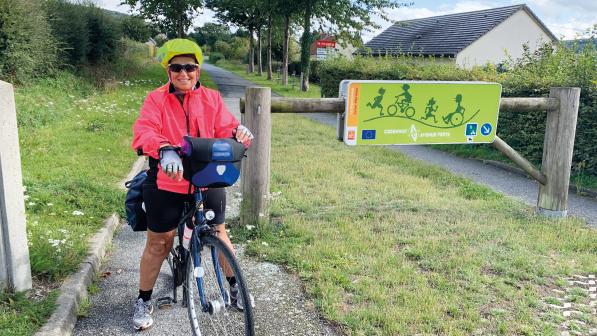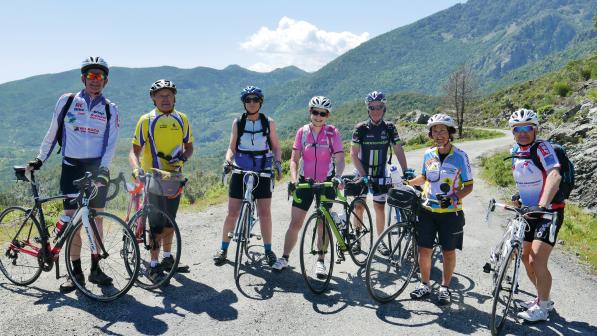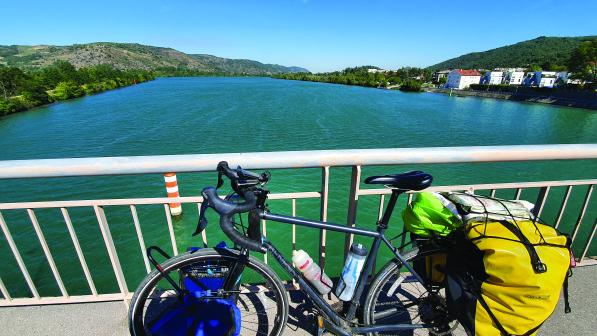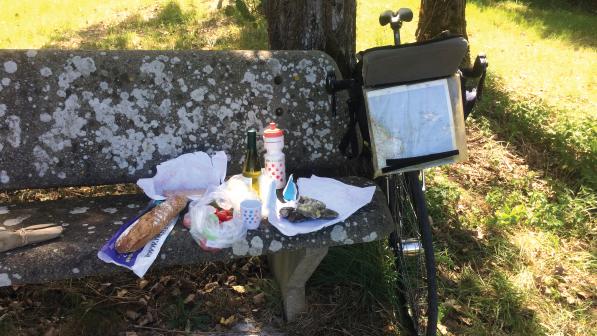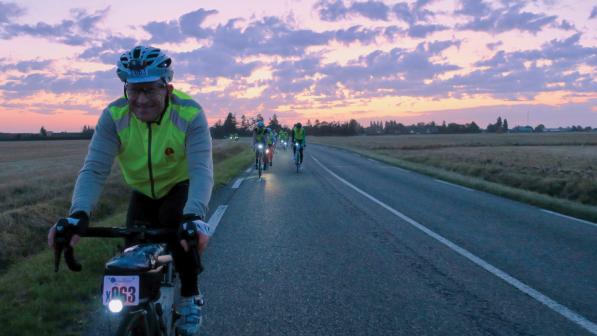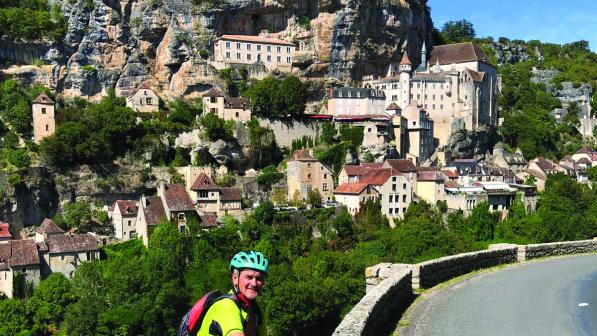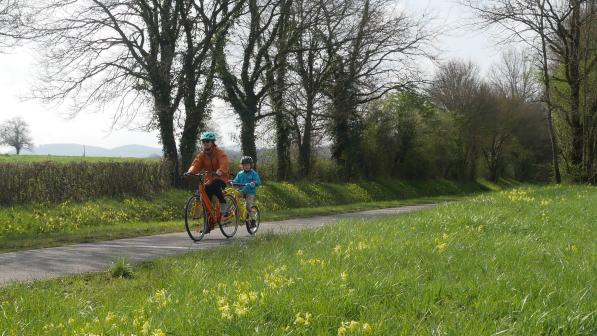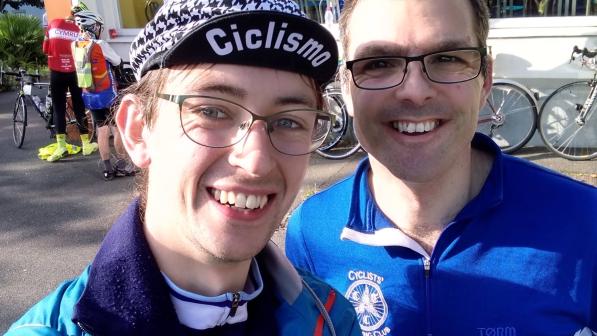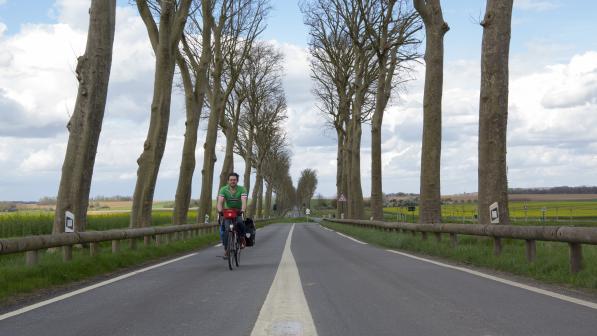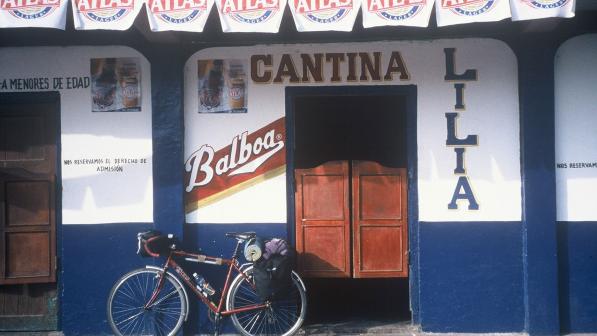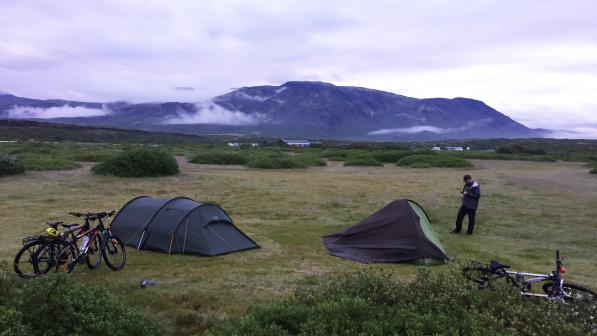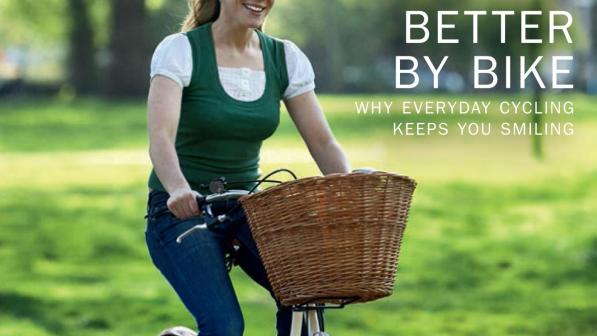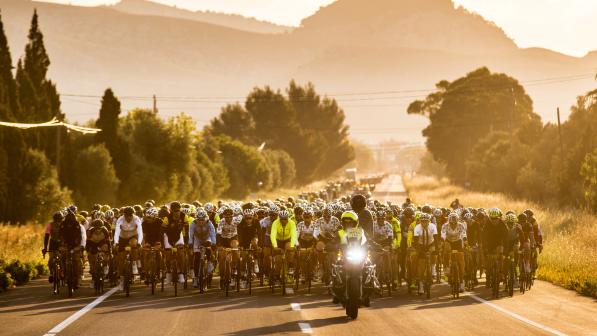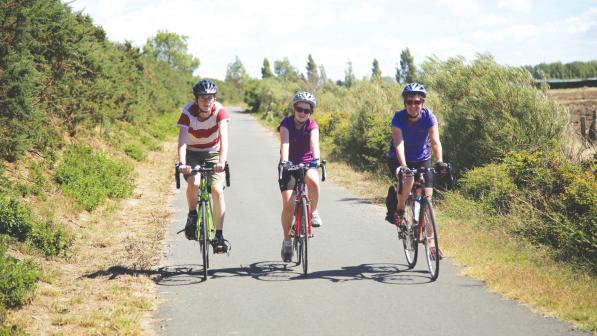Great Rides: Cycling back to happiness in France

At New Year I made a resolution to have lots of mini-adventures, so booked a ferry to France for a week’s cycling tour in the summer. The next day a car drove into me at a junction. It was an odd experience travelling backwards on a bonnet, aware that this might be it – the end. I survived. Whether I’d recover in time for my trip was, just as I had been during the crash, up in the air.
May arrived. I was still having physio for nerve damage in my leg, whiplash, and a suspected displaced coccyx. Getting back on a bike wasn’t easy. While sitting on chairs was painful, being on a saddle shifted my weight forwards enough to make cycling manageable. I was also panicky, no longer trusting that drivers would stop.
The good news was that the driver admitted fault, and I received an insurance payment through my Cycling UK membership. I treated myself to a new bike, a women’s Pinnacle Arkose 1. But as the holiday drew closer,
I remained apprehensive.
When D-Day arrived, I boarded a packed train from Bristol to Portsmouth. Even with a bike reservation, it was like a game of human, luggage and bicycle Tetris. At the port, I joined queues of cars, motorbikes and camper vans. Once aboard, I strapped my bike to a railing and took photos so as not to forget which deck it was on.
I was woken by Brittany Ferries piping music into the cabin around 6am, and an hour later was untying my bike to a morning chorus of engines. The car deck doors opened to sunshine. Soon I was sipping an overpriced but delicious latte outside a café within the grey, granite walls of St Malo.
On the greenways
My tour proper began at Dinard, a 15-minute journey away on a local Corsaire ferry. I pedalled uphill asking locals for the ‘velo verde’. They responded with confused expressions, then exclamations of ‘greenway!’ and directions to the sandy, tree-lined bike path. French cyclists greeted me not with a polite nods like in the UK but friendly ‘bonjours’.
I took a small detour, following a sign saying ‘menhir’. It was a huge monolith, leaning at a gravity-defying angle. Apparently, village girls used to climb the stone in their christening knickers to bring luck finding a husband. Decked out in padded cycling shorts and slippery SPDs, I decided against it.
My route continued through the village of Taden, where I stopped at a tabac. These bars always feature: cheap coffee; alcohol; and groups of French men betting on horse races. I then ate lunch down by the river. More than one French person wished me ‘bon appétit’ as I munched on a baguette. Nobody says ‘enjoy your meal’ back home unless you’re in a restaurant.
At the end of the greenway was the medieval town of Dinan. It was gorgeous, with its light brown stone bridges, viaduct, cobbled streets, and timber buildings all competing for attention. By 6pm, I was waiting with all the other guests to gain entry to the youth hostel.
The medieval town of Dinan was gorgeous, with its light brown stone bridges, viaduct, cobbled streets, and timber buildings all competing for attention.
Caroline Burrows, Cycling UK member
The bunkrooms were separated by gender but the bathrooms weren’t. I queued for a shower behind a rotund man in his Y-fronts. Later, he was fully-dressed and part of a group of friendly motorbikers. They offered me a type of green alcohol and laughed when I stuck to my peppermint tea.
Dark clouds
It was Sunday. Knowing that most of northern France would be shut, I added two baguettes and a jar of honey to my food stash. I followed the greenway along the river to Léhon Abbey, where the path became too narrow and rocky. I switched to small lanes instead – yellow D-roads on the map.
Back home, when cars aren’t driving straight into me, they sometimes play a game of aggressive horn honking, followed by a drive-by rant about cyclists not paying an imaginary form of road tax. It was a pleasant experience to find French drivers giving a friendly toot before overtaking in a wide arc.
Wet, grey, skies intermittently replaced the sun; my waterproofs went on and off. The rhythm of cycling all day was chipping away at my melancholy but I’d find my thoughts turning like my wheels. One moment, I’d be aware of bird song among the trees, then uncertainties about my body and my abilities circled back round again. I was well prepared for the meteorological dark skies following me; the emotional ones were proving harder to manage.
As it was Sunday, I hoped to find a tabac open. However, on reaching Médréac, everything was shut and I was out of water. I spied a butcher’s shop, its window painted with the image of a local pro cyclist holding aloft a piglet dressed in a blue cape. The lights were off but the door was half open. Inside, the owners were cleaning. They proverbially saved my bacon by filling up my water bottles.

My planned journey, which was supposed to be gently reacquainting me with cycle touring, was stretching out like a piece of elastic. Yet finally the forest of Brocéliande appeared in the distance, its treetops hidden behind a steamy mist. Thunder rolled, making me wonder if the bike’s tyres would provide insulation if I were hit by lightning.
The forest of Brocéliande appeared in the distance, its treetops hidden behind a steamy mist.
In Folle Pensée, I was welcomed into a King Arthur-themed B&B. My face fell when the owner told me the nearest restaurant was 5km away but I hadn’t carried all that food for nothing. I retired to my attic room, which was painted to represent the fairy Viviane, who trapped Merlin in the forest. The window showcased a tempest above, forks of lightning illuminating the room. Legend has it that when water is splashed on a stone slab at the Fontaine de Barenton, a storm will rage. Somebody had spilled a lot of water…
Better together
I had a rest day here. The day after, I passed through Josselin and its turreted, fairy tale castle, onwards to a farmhouse containing a warm-hearted woman called Nathalie. Using her laptop and my phone, we nattered away with Google Translate. Despite feeling shattered, I said yes when she asked if I wanted to go with her to singing practice.

We drove down winding country lanes with bottles of home-made cider clanging in the backseat. Inside a large barn was a stage and a recording desk. Nathalie’s folk choir – called ‘Lies’, Breton for ‘multitude’ – were rehearsing for Fest Noz (‘night festival’).
The women sang and the men played instruments. Nathalie introduced me to the fiddle player and sound-engineer, who’d cycled around the world with some friends plus their friend’s father, who suffered from multiple sclerosis. They’d had a buggy specially designed for the father to sit in, and they visited MS organisations along the way.
Back at the farmhouse, Nathalie showed me their YouTube videos: ‘MS World Tour’. In one clip, the fiddle player said: ‘Alone you can go faster, but together you can go further.’ I nearly started crying.
Maël-Carhaix’s cats
After so much countryside, it felt a bit of a shock to encounter Pontivy’s traffic lights, supermarkets, and cars. I had a lengthy lunch in the park next to the river behind the hostel. I had thought I might need to stop eating the tough baguettes, as my teeth felt in danger of falling out. So I’d devised a technique of sucking on the bread to soften it, giving me the combined eating habits of a baby and a fly. I dozed on the grass waiting for the hostel to open at 5.30pm.
Next day, I rode about 30 miles to Maël-Carhaix. The sun was out in full, the heat bouncing off the road as the temperature increased during the afternoon. My skin was a slimy combination of sun-cream and sweat, which attracted a layer of dust and insects.
In Maël-Carhaix, I was greeted by a friendly Irish couple at their guesthouse and café. Its windows were filled with second-hand novels, exchanged for donations to have the undomesticated cat population spayed. I heard some of them howling in the night.
The tour’s rewards
For the 40-mile stage to Morlaix, I carried an extra 1.5 litres of water. The route looked sparse and it was hot again. Even if there were villages, there’d be no guarantee they’d be open; I hadn’t yet cracked Brittany’s secret shopping timetable.
Heading north, I saw a huge yellow bicycle, a fire extinguisher on its frame instead of a water bottle. A man from the restaurant opposite told me the Tour de France had passed by in 2012. Finally, years of watching Phil Liggett and Paul Sherwen commentate every July had paid off. I used all the French vocabulary I’d garnered in one conversation: peloton, bidon, tour, étape, velo.

Nearing the top of one long hill, a group of touring cyclists came into view. The man in front stopped.
‘Bonjour,’ I said, smiling.
‘Bonjour, ça va?’
‘Ça va,’ I said, before adding, ‘No parlez français.’
‘I don’t speak French either,’ he said.
‘Where are you from?’
‘Bristol,’ he said, wondering why I burst out laughing.
‘That’s where I live.’
The quiet road grew larger as I headed down to Morlaix. I pedalled beneath its huge viaduct and through the bustling mediaeval streets to my hotel, where I was allowed to keep my bike in its restaurant. Being a Friday in France, the restaurant was of course closed.

My final day was a short ride to the port of Roscoff, the original home of the Onion Johnnies, Breton farmers who sold onions from bicycles. I walked my bike as close to the sea as I could. It seemed strange now that I’d almost cancelled this trip due to stress and doubt. The best thing for me had clearly been to sit on my bike and keep pedalling, up and down hills, beneath trees, and through sun and rain.
